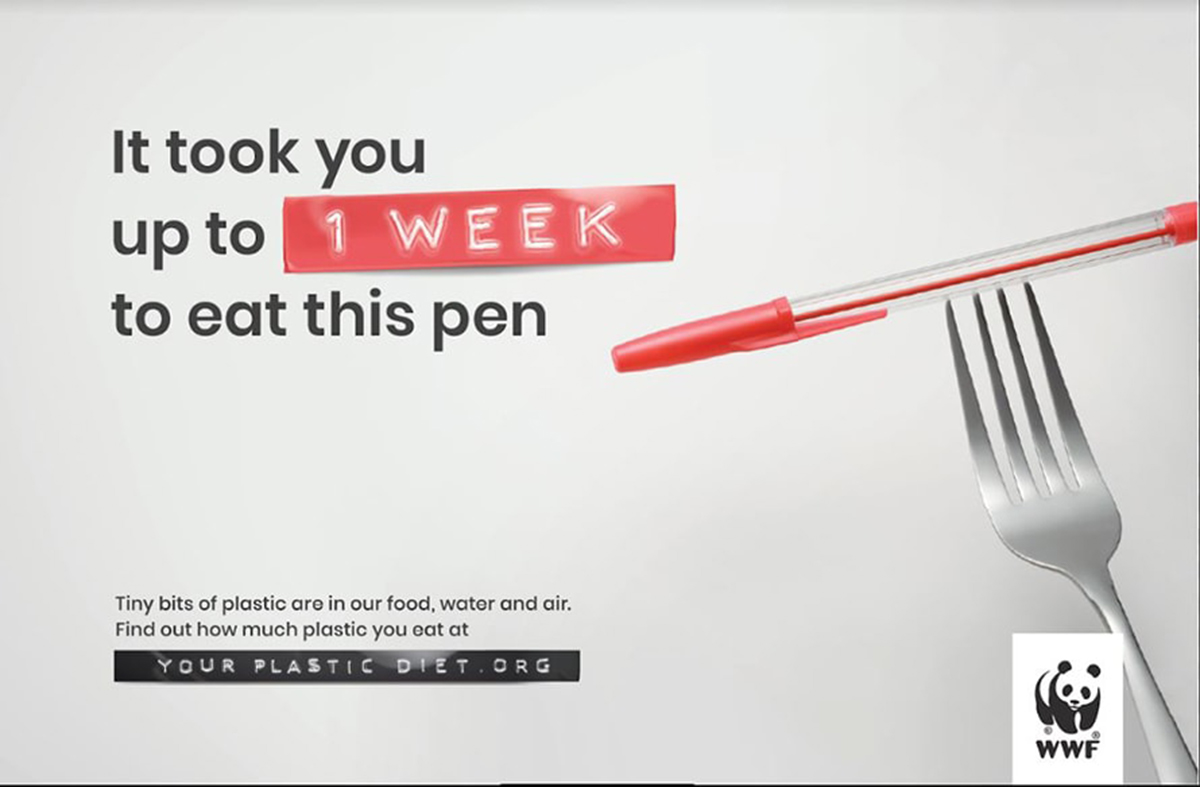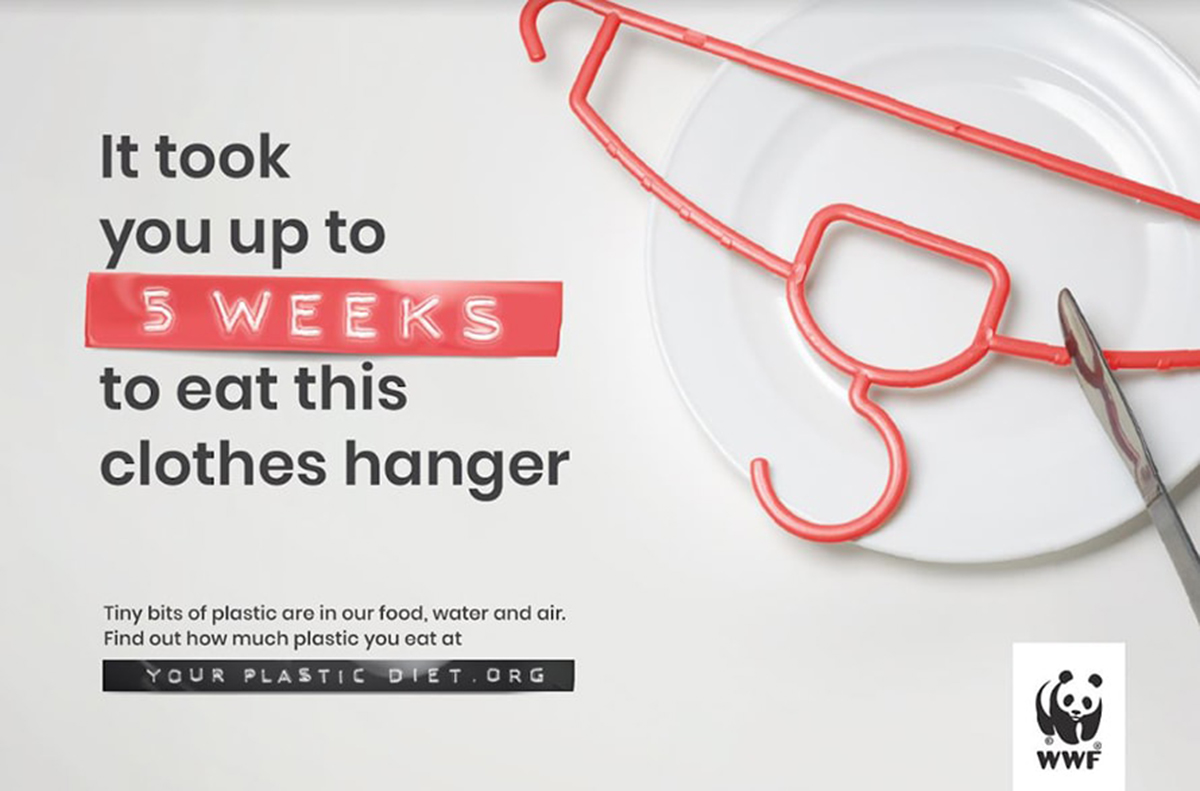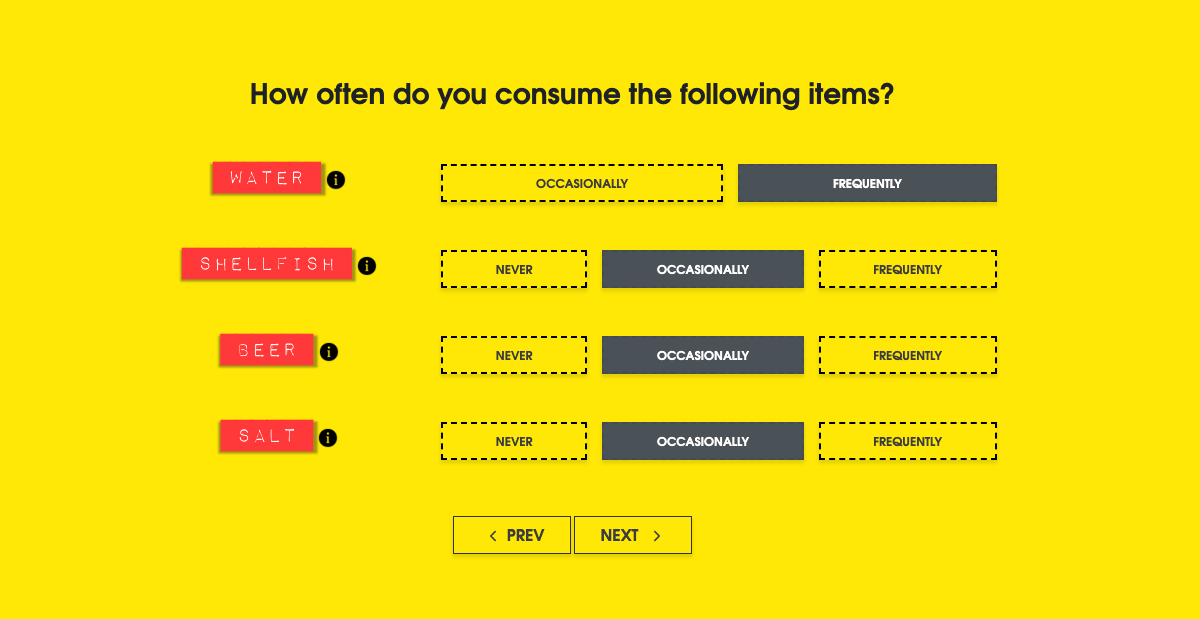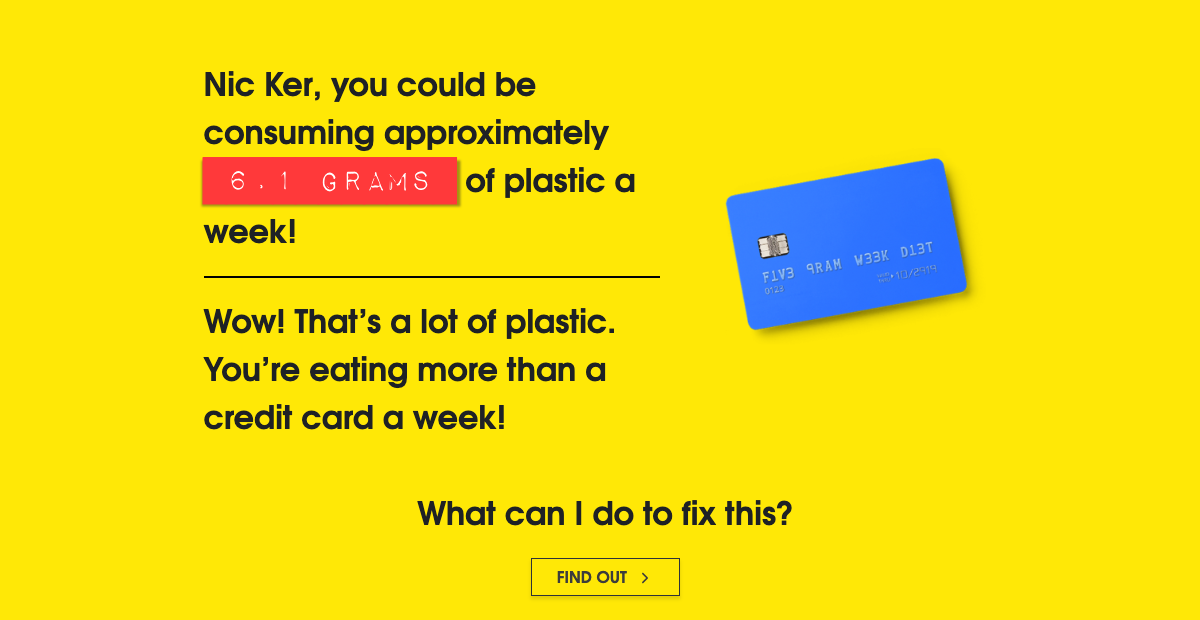Experts think that by 2050, there could be more plastic than fish in the sea. Plastics, a signature material of the 20th century, is such an integral part of our lives that it has become invisible. So much so that we’re consuming relatively copious mounts plastics and we don’t even know it.
How did plastics get in our food? One word — microplastics.
Ever heard of something called microplastic, or the ingestion of microplastics? Probably not, but it’s an issue that the World Wildlife Fund (WWF) is trying to raise awareness on with help from Grey Malaysia, a Malaysian advertising agency.
Aptly titled as Your Plastic Diet, the campaign is based on research conducted by the University of Newcastle in Australia, and comes in the form of some pretty visuals—but with an altogether more serious message.
We are eating plastic. Up to 5g of it per week, according to the study. That’s roughly the same amount of plastic that a credit card is worth, for some perspective. After a month, the average human consumes up to 21g; a plastic hanger’s worth.

What are microplastics?
Microplastics are very small pieces of plastic that pollute the environment. Microplastics can be small plastic beads commonly found in cosmetics and facial wash or it can be any type of plastic fragments smaller than 5 mm in length from plastic bottles, plastic fibres, fishing nets and plastic bags that degrade and breakdown.
By some estimates, over 230 kg of plastic makes its way into the ocean every second. Almost all of it will breakdown and become microplastics and because of the large amount of microplastics that permeates the ocean and our environment, the material has started entering our food chain.
According to the research, the single largest source of plastic ingestion is through water (bottled/tap water), followed by salt, shellfish, and beer.

Due to its ‘micro’ nature, these plastics particles are not picked up by standard water filtration systems and can end up in circulated water sources as well as the general environment.
Marco Lambertini, international director general of WWF said in a statement;
“Not only are plastics polluting our oceans and waterways and killing marine life—it’s in all of us, and we can’t escape consuming plastics.”
Governments need to take action
The campaign takes an angle that is decidedly close-to-heart for many of us out there, with everyday items used to illustrate the effect that plastics have towards the pollution of our environment.
The video above puts forward some startling facts, highlighting how the average person consumes over 100,000 microplastics a year. This is about a credit card’s worth of plastic per week, a clothes hanger per month, or a whole plastic comb in the period of 3 weeks.
How much plastic are you eating?
On the campaign’s website, you’ll also be able to take a quick test to see an estimation of how much plastic you’re ingesting on a regular basis.



The results were pretty grim reading for me, but that’s the whole point of the campaign. At the end of the test, there’s a landing page where you can choose to lend your support to the campaign, where you’ll also see a message from WWF calling for businesses and governments to work together against the issue.
Marco Lambertini explains;
“If we don’t want plastic in our bodies, we need to stop the millions of tons of plastic that continue leaking into nature every year. In order to tackle the plastic crisis, we need urgent action at government, business and consumer levels, and a global treaty with global targets to address plastic pollution.”
[ VIA ]








